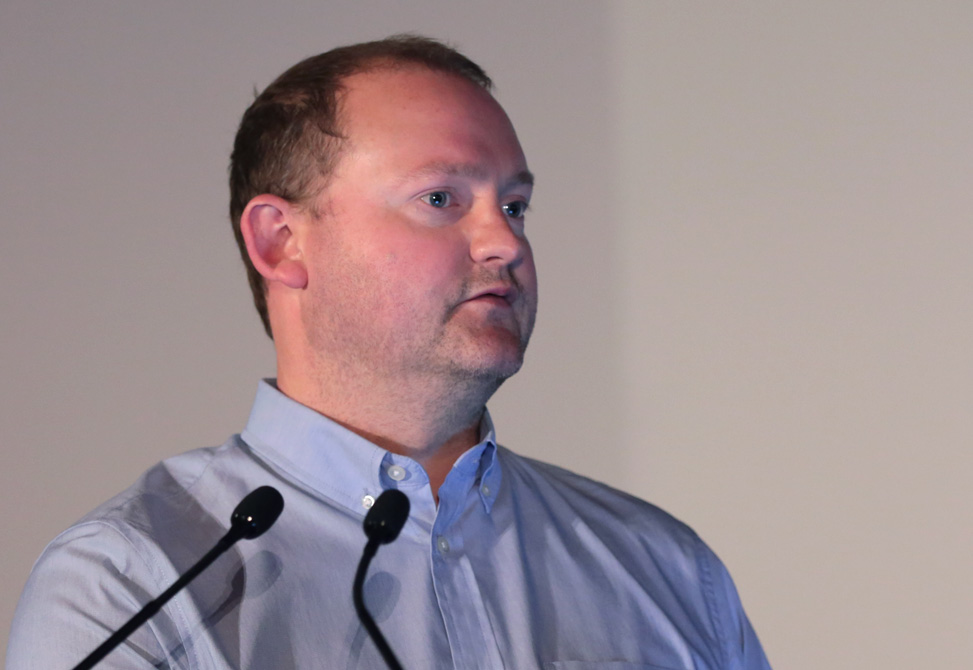Andrew Jamieson
University of Glasgow
Talk Session: SESSION 1: POST-TRANSLATIONAL MODIFICATIONS
Date: Sunday, June 12, 2022
Talk Time: 08:30 am - 08:55 am
Talk Title: A Hydroxamic Acid-Modified Peptide Library Provides Insight into the Molecular Basis for Substrate Selectivity of HDAC Corepressor Complexes
Andrew Jamieson was born in Glasgow and raised in Strathaven, Scotland. In 2003, he completed a BSc Honours degree, 1st Class, in Chemistry, with Medicinal Chemistry at the University of Glasgow. He subsequently studied for a Ph.D. at the University of Glasgow under the supervision of Dr Andrew Sutherland. The aim of his Ph.D. was to investigate a new substrate directed, palladium-catalysed aza-Claisen rearrangement, and utilise this novel reaction for the synthesis of natural products.
In 2007, he took up a postdoctoral research fellowship with Professor William Lubell at the University of Montreal, Canada. During this time he developed a novel synthetic method with which to systematically scan peptides for secondary structure. His research emphasis was determining the bioactive conformation of the growth hormone secretagogue, GHRP-6, as well as the allosteric modulator of the IL-1 receptor, 101.10, rytvela.
In 2008, he took up a postdoctoral position with Professor Andrew Hamilton FRS at Yale University, USA. While there he worked on the design and synthesis of a novel peptide beta-strand mimetic, before moving with Professor Hamilton in 2009 to the University of Oxford, UK.
In August 2010, he was appointed to a lectureship in the Centre for Chemical Biology in the Department of Chemistry at the University of Leicester, UK. He was then appointed as a senior lecturer in Chemical Biology at the University of Glasgow School of Chemistry in July 2016. He currently runs a research group whose work focuses on the synthesis of peptides and peptidomimetics that can be used to probe the biological mechanisms of cancer and Alzheimer’s disease.
Research in the Jamieson Group is focused on the design and synthesis of peptides and peptidomimetics that can be used to probe the biological mechanisms underpinning disease. The information obtained from these studies is then used to inform the development of precision medicines.
We are particularly interested in the selective regulation of ion-channels by conotoxins with potential application in the treatment of severe pain. We are also investigating the structural activation and substrate binding of deubiquitinase, DUB, and histone deacetylase, HDAC, enzymes and developing novel peptide based inhibitors. We are also attempting to determine the structure of toxic amyloid proteins that are proposed to be the underlying cause of Alzheimer’s disease.
Histone deacetylase, HDAC, enzymes are implicated in several diseases including HIV infection, Alzheimer’s and various cancers. Understanding the pathophysiological role of HDACs is of vital importance to drug discovery efforts. Class I HDACs 1, 2 & 3 become catalytically active only when they form multiprotein corepressor complexes, each of which is believed to have a distinct role in the regulation of gene expression. HDACs hydrolyse acetyl groups from an ε-amine of specific histone-tail lysine residues. However, the mechanism bywhich HDAC corepressor complexes achieve this specificity is currently poorly understood.
In this work we developed novel chemical tool peptides to explore the origin of HDAC corepressor complex substrate selectivity. First an efficient chemical synthesis of Fmoc amino acids having zinc-binding groups was developed. A library of acetyllysine-containing histone tail substrate peptides and hydroxamic acid-containing inhibitor peptides were prepared by solid-phase synthesis. The activity of these peptides was assessed against the full range of class I HDAC corepressor complexes. The data obtained provides strong evidence that site-specific HDAC corepressor complex activity is driven by recognition of the primary amino acid sequence surrounding a particular histone tail lysine site. This information was used to develop HDAC corepressor complex selective inhibitors which are promising lead compounds for further drug development.






